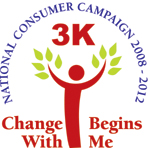| Study: Too Much Sugar Increases Heart Risks |
 |
 |
 |
| Written by 3K Admin |
| Friday, 23 April 2010 21:58 |
|
By Alice Park Wednesday, Apr. 21, 2010 By nature, people like sweet foods — really, really sweet foods, apparently. Americans now consume 19% more added sugar in their daily diet than they did in 1970, according to recent figures from the U.S. Department of Agriculture. While it's no secret that all that excess sweetness has helped add inches to the average American waistline — and probably sprouted an extra cavity or two — a new study reveals some less obvious health risks that come with consuming too much added sugar: it can also lead to dangerously high levels of blood fats, and raise the risk of heart disease as much as a diet full of high-fat foods. Some small studies have previously indicated that eating too much sugar may lead to heart-hazardous levels of fat and cholesterol in the blood. So, researchers decided to gauge the health impact of the sugar contained in an average diet. "We wanted to see if people were eating a regular diet, was there an association between the added sugar they were eating and what their triglyceride and HDL levels were," says Dr. Miriam Vos, a professor of pediatrics at Emory University and lead author of the research that appears this week in the Journal of the American Medical Association. Vos led a group of nutritionists, epidemiologists and physicians in an analysis of data from a national health survey of more than 6,000 men and women conducted between 1999 and 2006. Each of the participants had been interviewed about what they had eaten in the 24 hours prior to the survey, and Vos' team then calculated the sugar content of these foods using government food pyramid equivalents. On average, the respondents consumed 21 teaspoons of added sugar a day (which does not include sugar from natural sources), accounting for nearly 16% of their total daily caloric intake. Current World Health Organization guidelines suggest consuming no more than 10% of total daily calories from added sugar. In 2009, the American Heart Association (AHA) recommended half that amount. Compared with people consuming less than 5% of their daily calories in added sugar, those in the highest consumption group — who got 25% or more of their daily calories in added sugar — were twice as likely to have low levels of HDL cholesterol, the beneficial lipid that mops up artery-clogging LDL cholesterol. According to government health guidelines, HDL levels below 50 mg/dL for women and 40 mg/dL for men are considered low; 43% of the highest sugar consumers recorded low HDL, while only 22% of the lowest sugar consumers did.
Low HDL and high triglyceride levels are two of the primary risk factors for heart disease. Exactly how dietary sugar contributes to these changes in blood lipid levels isn't clear yet, but researchers think it has something to do with fructose, a backbone of many sugars (particularly the high fructose corn syrup that is becoming ubiquitous in processed foods and sugared sodas). Fructose can prompt the liver to generate more cholesterol and metabolize triglycerides from sugar in the diet, as well as slow down the clearance of fats from the blood. Dr. Rachel Johnson, a professor of nutrition at the University of Vermont, says she was encouraged by the results. Johnson was a member of the American Heart Association committee who advised Americans to limit added sugar to 5% of daily caloric intake. But at the time of the recommendation, she concedes, the data on the link between sugar and heart-hazardous lipid profiles was not as strong as the association between sugar and obesity and weight gain. "This paper adds strength to the evidence around added sugar and elevated triglycerides and lowered HDL," she says. "It's certainly an important paper." But translating its results into public health benefits will take some doing, mainly because most Americans are unaware of how much added sugar they eat. Current nutrition labels on food do not distinguish between added sugar and naturally occurring sugar, lumping them together as carbohydrates. So it's nearly impossible for consumers to understand exactly how much added sugar they are taking in — unless they are truly meticulous label readers. It's possible, says Johnson to extrapolate how much added sugar is in sweetened yogurt, for example, by comparing its label to that of an unsweetened version. And products such as raisin bran cereals may appear to contain a high amount of added sugar, when in fact much of it is actually naturally occurring sugar found in the raisins. "It is difficult for the consumer to know exactly how much added sugar he is getting," says Johnson. The AHA and several other organizations, however, are petitioning the Food and Drug Administration to include added sugars on the label, just as trans fats are now separated from fats so consumer can become more fat smart about what they eat. Until then, Johnson suggests a simple rule of thumb — if the product doesn't contain ingredients that are naturally sweet, such as fruit, then most of the sugar content is likely added sugar. And added sugar, as Vos and her team found, can do far more harm than simply increase your pants size.
Source: http://www.time.com/time/health/article/0,8599,1983542-1,00.html
|
| Last Updated on Friday, 23 April 2010 22:06 |


